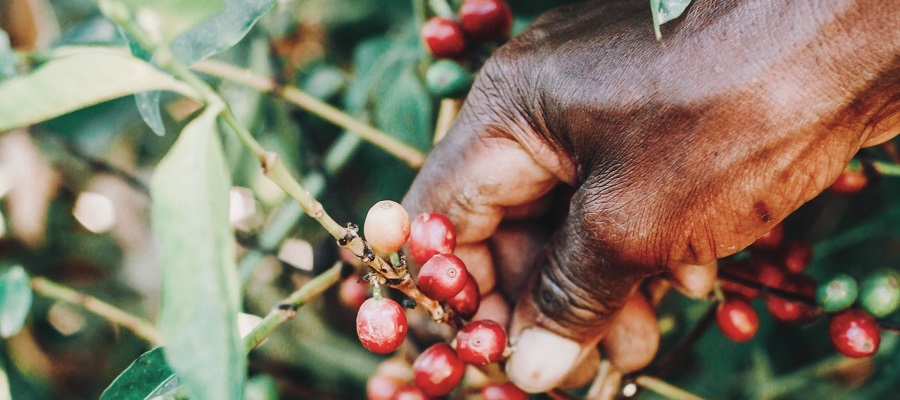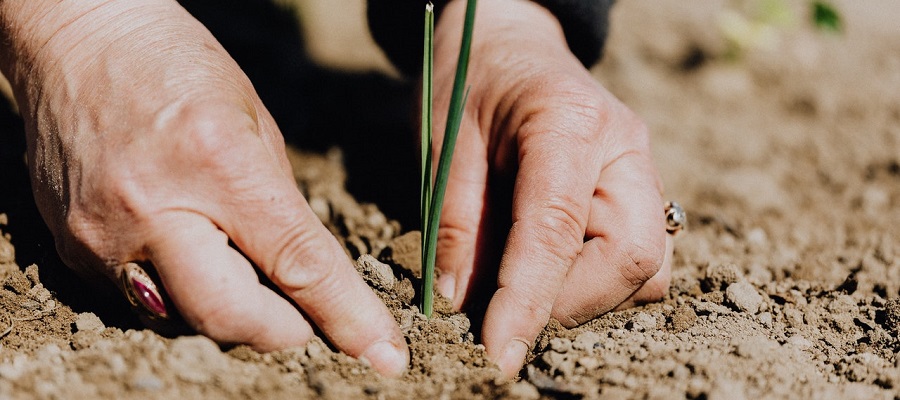On no continent is food security as low and malnutrition as high as in Africa. In most sub-Saharan countries, food production has failed to keep pace with population growth over the past three decades. In the drought-plagued 1980s, food consumption in Africa as a whole was twice as high as domestic production; in the 1990s, it was 30% higher. Nearly 200 million people in Africa are undernourished; in central, eastern and southern Africa, that's more than 40% of the population. Sub-Saharan Africa has a quarter of the food-insecure population of all developing countries. Many African countries are therefore highly dependent on external food aid, which in Kenya and Tanzania, for example, accounted for two-thirds of food imports in the 1990s. Only if agriculture grows by 4% per year, which is currently achieved by very few countries, will it be possible to achieve a basic food supply in the future. Against this background, possible negative consequences of climatic changes on agriculture are life-threatening risks.
The agricultural sector is of great importance in Africa and contributes between 10 and 70 % to the gross domestic product, depending on the state. Agriculture in Africa is particularly sensitive to climatic changes, not least because of the rain-fed agriculture of the widespread small-scale subsistence farming. Prolonged droughts and floods, for example as a result of El Niño events, have repeatedly led to major crop losses and famine. For example, the Sahel drought in the 1970s and 1980s in particular resulted in a devastating famine and made numerous people environmental refugees.
Precisely because of the strong dependence of its agriculture on climatic conditions, Africa is repeatedly seen as the continent most at risk from climate change.1 For important regions of Africa, however, climate projections are still uncertain and sometimes contradictory. For example, some models project greater drought in the Sahel in the 21st century, while others project more precipitation.
In general, it can be assumed that there will be winners as well as losers in the agricultural sector in Africa, depending on the region and the agricultural sector in question.2 Roughly speaking, three agricultural sectors can be distinguished that respond differently to climate change: 1. dryland farming, 2. irrigated farming and 3. livestock farming.3 Dryland farming, which is practiced by the majority of smallholders, is particularly widespread in warm and drier regions. It is particularly vulnerable to increases in temperature and decreases in precipitation. Irrigated agriculture is widespread in cooler and humid regions, and livestock farming in warm and dry regions.
Accordingly, the effects of climatic changes are different. A moderate increase in temperature leads to crop losses in dryland farming, but to higher yields in irrigated farming, which tends to be used in cooler areas. Livestock production also suffers from higher temperatures, as evaporation increases with them. On average, a warming of about 1 °C will have little impact on African agriculture. At a higher level of warming, however, greater problems are to be expected, not least because of the increase in evaporation.
Changes in precipitation will have a more significant impact. They will probably increase in East Africa and tend to decrease in South Africa. The forecasts for the Sahel are uncertain, while those for the West African coastal fringe indicate an increase. An increase in rainfall will favor agricultural production, while a decrease will lead to losses. In general, arid and semiarid areas are expected to increase by 5% or by 60-90 million ha throughout Africa. In southern Africa, forests will be converted from savannahs and savannahs from deserts already at a warming below 2 °C.4 However, the growth-promoting effect of higher CO2 levels in the atmosphere must also be taken into account. However, as Fig. 1 shows, even then agricultural production will decline in most countries in Africa by the end of the 21st century, especially in South Africa and the Sahel.
A study on the Republic of South Africa comes to similar conclusions.6 A 1 °C increase in temperature has positive effects on irrigated agriculture, but not on the mass of smallholder farmers, who generally practice dryland agriculture. For small changes in precipitation, the effects depend on the time of year. Especially at the beginning of the (southern) summer, even small increases in precipitation are favorable for agriculture. However, depending on the model and scenario, model calculations suggest a temperature increase of 2.3 to 9.6 °C and a precipitation decrease of 2-8 % by the end of the 21st century. This development could reduce the income of small farmers in particular by up to 90% by 2100.
References
- Challinor, AJ; Wheeler, TR; Garforth, C; Craufurd, P; Kassam, A (2007): Assessing the vulnerability of food crop systems in Africa to climate change, Climatic Change 83, 381-399; Parry, M., C. Rosenzweig, M. Livermore (2005): Climate change, global food supply and risk of hunger, Phil. Trans. R. Soc. B 360, 2125-2138
- IPCC (2007): Climate Change 2007, Working Group II: Impacts, Adaptation and Vulnerability, 9.4.4
- Kurukulasuriya, P. et al. (2006): Will African Agriculture Survive Climate Change?, The World Bank Economic Review 2006 20(3):367-388; doi:10.1093/wber/lhl004
- Wissenschaftlicher Beirat der Bundesregierung Globale Umweltveränderungen (2007): Welt im Wandel: Sicherheitsrisiko Klimawandel, 7.4.1 - online
- Verändert nach Hugo Ahlenius, UNEP/GRID-Arendal (2007): Projected agriculture in 2080 due to climate change; Datenquelle: Cline, W. R. (2007): Global Warming and Agriculture: Impact Estimates by Country. Washington D.C., USA: Peterson Institute
- Benhin, J.K.A. (2008): South African crop farming and climate change: An economic assessment of impacts, Global Environmental Change 18, 666-678


